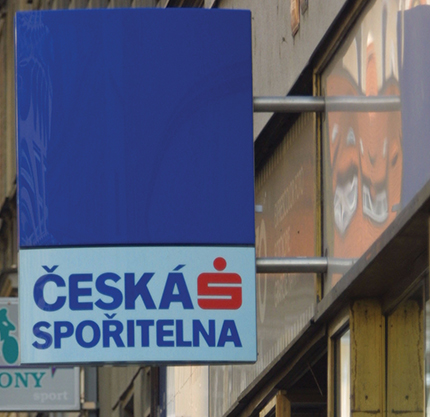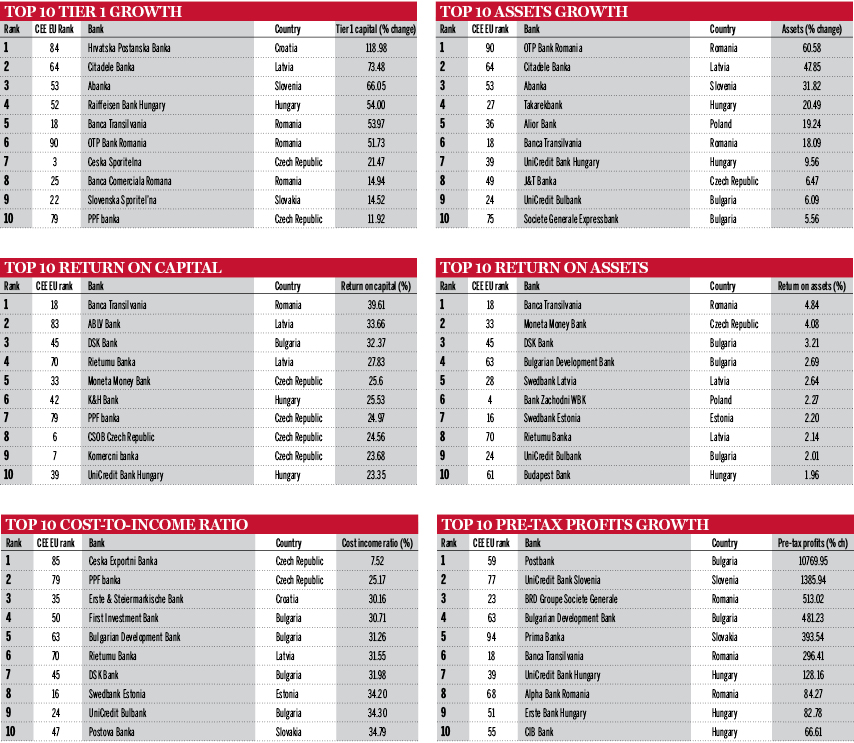Top 100 CEE EU Banks ranking: Poland in pole position
Currency depreciation took its toll in The Banker's Top Central and Eastern Europe EU Banks rankings, leading to mixed results. Polish banks maintained their lead, with notable success stories coming from Romania and Slovenia. Stefanie Linhardt reports.
Financial institutions in central and eastern Europe’s (CEE’s) EU member states have had a mixed year. Year-end 2015 pre-tax profits at CEE EU’s Top 100 banks increased by 25.8%, while both assets and capitalisation dropped. Only banks in Romania, Poland and Latvia increased their Tier 1 capital – the benchmark for our Top 100 banks ranking.
It is worth mentioning, however, that figures for all banks were exaggerated by the depreciation of currencies in the CEE region compared with the US dollar since our 2016 ranking (which measured the banks using end-2014 figures). While it lost some value against the dollar, the Czech koruna was the least impacted CEE currency, whereas Poland’s zloty depreciated by the largest percentage against the US currency, some 16.43%.
Top spots stable
Although the strongest currency impact has been registered by the zloty, Poland’s PKO Bank Polski and Bank Pekao still lead the CEE EU rankings. Bank Zachodni has also kept its fourth spot, and overall some 19 Polish banks have made it into the Top 100 by Tier 1 capital – if one fewer than the 2016 ranking.
Ceska Sporitelna takes third place. The Czech bank, owned by Austria’s Erste Group, moves up from fifth place last year following a 21.47% increase in Tier 1 capital on the back of retained earnings and an additional Tier 1 hybrid capital issue. Thanks to this, it swaps positions with last year’s third placed OTP Bank of Hungary.
Other Polish banks have improved their positions this year, including mBank (owned by Germany’s Commerzbank), which rises by two spots to eighth; Millenium Bank Poland (from 18th to 14th); and Bank BGZ BNP Paribas, which has jumped from 32nd last year to 15th following a takeover and merger of BNP Paribas Bank Polska by Bank Gospodarki Żywnościowej.
Profits up
Across the Top 100 ranking, institutions have recorded an aggregate of $9.9bn in pre-tax profits, with Croatia the only jurisdiction where the banks recorded aggregate losses. Six out of Croatia's nine banks in the rankings lost money in 2015 – largely due to requirements for banks to convert legacy loans denominated in Swiss francs to euros at an exchange rate predating the franc’s appreciation (a result of the Swiss National Bank’s decision to unpeg the currency from the euro in January 2015).
Hrvatska Postanska Banka, the largest Croatian bank, was one of the few not recording losses and had the largest increase in capitalisation following an $81m capital injection from private investors and the state.
Overall, Polish banks remained the most profitable in 2015, despite a 27.16% drop in full-year pre-tax profits to $3.63bn. Czech banks, while also recording a reduction, retained the second highest profit share in the region, and profits at Romania’s institutions jumped from 2014’s losses of $630m to the third highest in the region at $1.09bn.
Transilvania awakens
One European lender worth examining is Banca Transilvania. While Romania’s banks performed strongly across the board, with Tier 1 capital up by 7.08% – the largest aggregate percentage for any country – the largest Romanian bank features in five of our six top 10 tables this year.
Banca Transilvania increased its assets by 18.09% to $11.47bn in 2015, lifted its profits by nearly 300% and increased its Tier 1 capital by 53.97% after taking over and successfully integrating Volksbank Romania. It also became the most profitable bank in the ranking, with return on assets of 4.84% and return on capital of 39.61%.
Also back in profit are Slovenia’s banks – which suffered their own banking crisis in 2013 but recovered in fiscal 2015 with profits of $270m – and financial institutions in Hungary, which recovered after fiscal 2014’s $1.4bn loss to post a small $196m profit.
There are nine Hungarian banks in the ranking, two of which have made it into the top 10 banks by return on capital (Belgium’s KBC-owned K&H Bank and Italian-owned UniCredit Bank Hungary). Meanwhile Budapest Bank, which was sold to the Hungarian state by GE in June 2015, is the 10th most profitable by return on assets.




